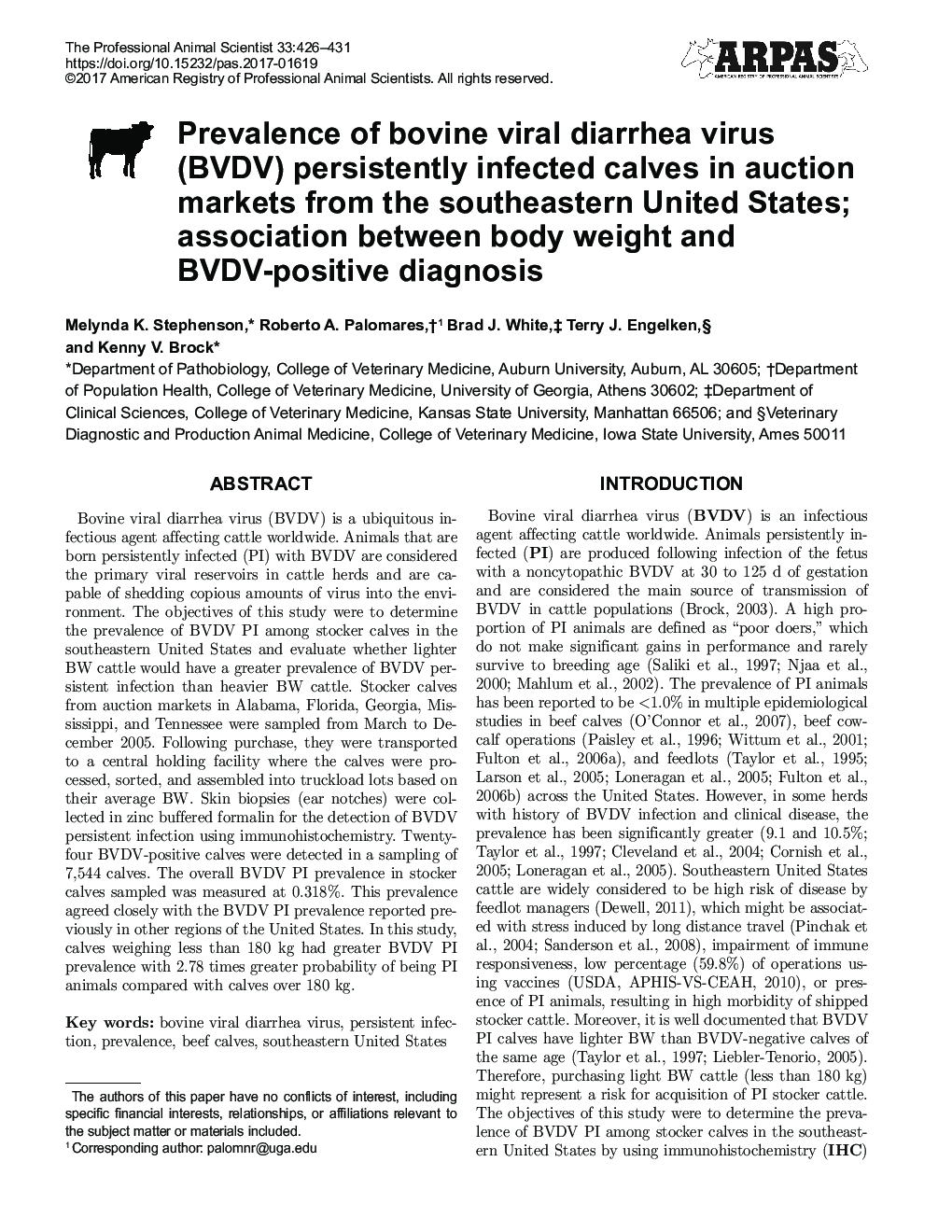| Article ID | Journal | Published Year | Pages | File Type |
|---|---|---|---|---|
| 8503738 | The Professional Animal Scientist | 2017 | 6 Pages |
Abstract
Bovine viral diarrhea virus (BVDV) is a ubiquitous infectious agent affecting cattle worldwide. Animals that are born persistently infected (PI) with BVDV are considered the primary viral reservoirs in cattle herds and are capable of shedding copious amounts of virus into the environment. The objectives of this study were to determine the prevalence of BVDV PI among stocker calves in the southeastern United States and evaluate whether lighter BW cattle would have a greater prevalence of BVDV persistent infection than heavier BW cattle. Stocker calves from auction markets in Alabama, Florida, Georgia, Mississippi, and Tennessee were sampled from March to December 2005. Following purchase, they were transported to a central holding facility where the calves were processed, sorted, and assembled into truckload lots based on their average BW. Skin biopsies (ear notches) were collected in zinc buffered formalin for the detection of BVDV persistent infection using immunohistochemistry. Twenty-four BVDV-positive calves were detected in a sampling of 7,544 calves. The overall BVDV PI prevalence in stocker calves sampled was measured at 0.318%. This prevalence agreed closely with the BVDV PI prevalence reported previously in other regions of the United States. In this study, calves weighing less than 180 kg had greater BVDV PI prevalence with 2.78 times greater probability of being PI animals compared with calves over 180 kg.
Keywords
Related Topics
Life Sciences
Agricultural and Biological Sciences
Animal Science and Zoology
Authors
Melynda K. Stephenson, Roberto A. Palomares, Brad J. White, Terry J. Engelken, Kenny V. Brock,
